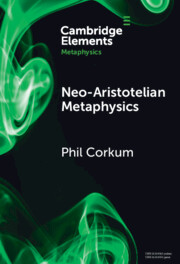Element contents
Neo-Aristotelian Metaphysics
Published online by Cambridge University Press: 21 April 2025
Summary
- Type
- Element
- Information
- Series: Elements in MetaphysicsOnline ISBN: 9781009234948Publisher: Cambridge University PressPrint publication: 31 May 2025

